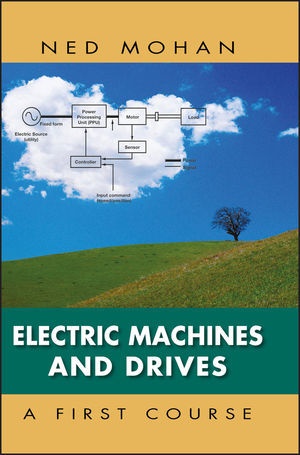Read more
Informationen zum Autor Ned Mohan is Oscar A. Schott Professor of Power Electronics in the Department of Electrical Engineering at the University of Minnesota, where he has been teaching for 33 years. He has written five textbooks; one of them is translated into several languages. He has 13 patents and has written over 200 technical articles. He is actively involved in the area of renewable energy and is working on the next generation of wind generators and storage. He received the Distinguished Teaching Award by the Institute of Technology at the University of Minnesota. He is a Morse-Alumni Distinguished Teaching Professor and is a member of the Academy of Distinguished Teachers at the University of Minnesota. He received the Outstanding Educator Award from the Power Engineering Society of the IEEE in 2008. He is a Fellow of the IEEE. Klappentext Mohan's Electric Machines and Drives is part of a three-book series designed for the power sequence electives on Electrical Engineering. The book focuses on power topics including advances in hybrid-electric cars and alternative energy systems, coupled with severe environmental problems associated with hydrocarbon-based fuels. The text builds off Mohan's successful MNPERE titles and adopts a systems approach. Zusammenfassung Mohan's Electric Machines and Drives is part of a three-book series designed for the power sequence electives on Electrical Engineering. The book focuses on power topics including advances in hybrid-electric cars and alternative energy systems, coupled with severe environmental problems associated with hydrocarbon-based fuels. Inhaltsverzeichnis PREFACE xi CHAPTER 1 INTRODUCTION TO ELECTRIC DRIVE SYSTEMS 1 1.1 History 1 1.2 What Is an Electric-Motor Drive? 2 1.3 Factors Responsible for the Growth of Electric Drives 3 1.4 Typical Applications of Electric Drives 3 1.5 The Multi-Disciplinary Nature of Drive Systems 8 1.6 Structure of the Textbook 9 References 10 Problems 11 CHAPTER 2 UNDERSTANDING MECHANICAL SYSTEM REQUIREMENTS FOR ELECTRIC DRIVES 12 2.1 Introduction 12 2.2 Systems with Linear Motion 12 2.3 Rotating Systems 14 2.4 Friction 20 2.5 Torsional Resonances 21 2.6 Electrical Analogy 22 2.7 Coupling Mechanisms 23 2.8 Types of Loads 26 2.9 Four-Quadrant Operation 27 2.10 Steady State and Dynamic Operations 27 References 28 Problems 28 CHAPTER 3 REVIEW OF BASIC ELECTRIC CIRCUITS 31 3.1 Introduction 31 3.2 Phasor Representation in Sinusoidal Steady State 31 3.3 Three-Phase Circuits 38 Reference 43 Problems 43 CHAPTER 4 BASIC UNDERSTANDING OF SWITCH-MODE POWER ELECTRONIC CONVERTERS IN ELECTRIC DRIVES 46 4.1 Introduction 46 4.2 Overview of Power Processing Units (PPUs) 46 4.3 Converters for DC Motor Drives ð2Vd , vo , VdÞ 52 4.4 Synthesis of Low-Frequency AC 58 4.5 Three-Phase Inverters 59 4.6 Power Semiconductor Devices 62 References 66 Problems 66 CHAPTER 5 MAGNETIC CIRCUITS 69 5.1 Introduction 69 5.2 Magnetic Field Produced by Current-Carrying Conductors 69 5.3 Flux Density B and the Flux f 71 5.4 Magnetic Structures with Air Gaps 74 5.5 Inductances 76 5.6 Faraday's Law: Induced Voltage in a Coil due to Time-Rate of Change of Flux Linkage 78 5.7 Leakage and Magnetizing Inductances 81 5.8 Transformers 83 5.9 Permanent Magnets 88 References 90 Problems 90 CHAPTER 6 BASIC PRINCIPLES OF ELECTROMECHANICAL ENERGY CONVERSION 92 6.1 Introduction 92 6.2 Basic Structure 92 6.3 Production of Magnetic Field 94 6.4 Basic Principles of Operation 96 6.5 Application of the Basic Principles 98 6.6 E...

